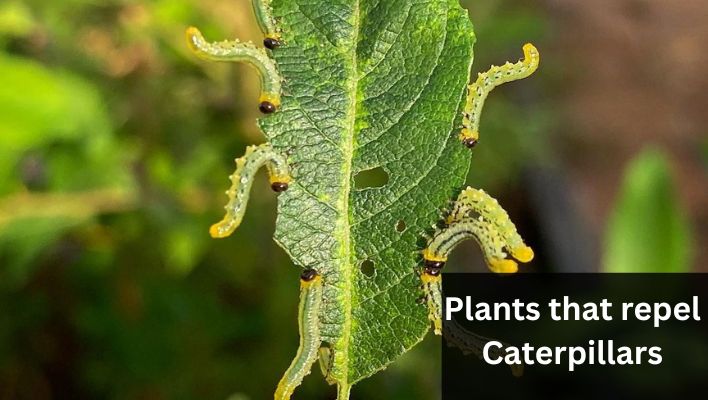Maintaining a healthy garden requires effective pest control measures to protect our precious plants from the relentless appetites of various insects. Among these pests, caterpillars pose a significant threat due to their insatiable hunger for foliage.
Controlling caterpillar populations in gardens is crucial for maintaining a healthy and thriving ecosystem. These voracious leaf-munching insects can cause significant damage to plants, leading to stunted growth, defoliation, and even the demise of beloved flowers and vegetables.
While chemical pesticides are an option, many gardeners are now turning to a more natural and eco-friendly approach: using plants that repel caterpillars.
These botanical superheroes not only offer an eco-friendly alternative to chemical pesticides but also add beauty and charm to our outdoor spaces.
By harnessing the power of nature’s defenses, we can create a pest-resistant garden without relying on harmful chemicals.
In this article, we will explore the fascinating world of plants that repel caterpillars. These botanical guardians not only keep caterpillars at bay but also offer a beautiful and aromatic addition to your garden. So, let’s dive in and discover the secrets of these natural pest deterrents.
What are Caterpillars and Why Are They a Problem?
Caterpillars are the larval stage of butterflies and moths, characterized by their long, segmented bodies and voracious appetites. These tiny creatures may seem harmless at first glance, but they can quickly become a significant problem for gardeners.
The primary concern with caterpillars is the damage they can inflict on plants. As they feed on leaves, they can strip foliage from plants, leaving them weak, stunted, and vulnerable to diseases. Large populations of caterpillars can completely defoliate a plant, depriving it of the ability to photosynthesize and compromising its overall health.
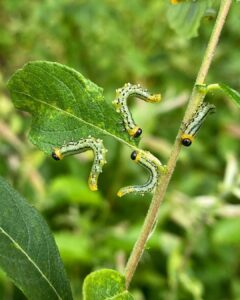
Moreover, certain caterpillar species have a preference for specific plants, making them targeted pests for gardeners growing particular crops or ornamental flowers. This specialized feeding behavior can result in severe damage and yield loss in agricultural settings.
To protect our plants from the ravages of caterpillars, it’s essential to explore natural and effective methods of pest control. One such approach is harnessing the power of plants that repel caterpillars, which provide an eco-friendly alternative to chemical pesticides.
These natural guardians not only deter caterpillars from devouring our beloved greenery but also contribute to the overall health and vitality of our garden ecosystem.
Understanding Caterpillar Repellent Plants
Caterpillar-repellent plants are botanical species that possess natural properties or characteristics that deter caterpillars from feeding on them. These plants act as a natural defense mechanism against these leaf-munching pests, making them an invaluable asset in our quest for pest control.
But how exactly do these plants work their magic? It’s a fascinating interplay of chemical compounds, aromas, and physical deterrents. Many caterpillar-repellent plants emit distinct scents or release volatile compounds that act as natural repellents. These odors can confuse or repel caterpillars, discouraging them from settling on or consuming the plant.
In addition to their aromatic defenses, some caterpillar-repellent plants have evolved physical characteristics that make them less appealing or more challenging for caterpillars to feed on. These adaptations can include tough or hairy leaves, spiky thorns, or sticky trichomes, which create obstacles for caterpillars and discourage them from continuing their feast.
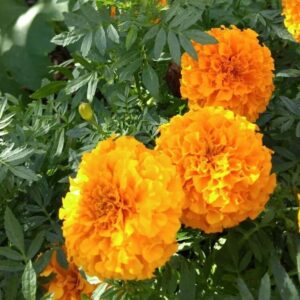
The benefits of using natural repellents like caterpillar repellent plants are abundant. Firstly, they offer an environmentally friendly alternative to chemical pesticides, minimizing the harmful impact on beneficial insects, birds, and other wildlife. By embracing natural solutions, we contribute to the preservation of a healthy and balanced ecosystem.
Furthermore, caterpillar-repellent plants add aesthetic value to our gardens. Many of these plants exhibit beautiful blooms, attractive foliage, or delightful fragrances, enhancing the visual appeal and sensory experience of our outdoor spaces.
Additionally, they can attract pollinators, such as butterflies and bees, promoting biodiversity and supporting the overall health of our garden.
By incorporating caterpillar-repellent plants into our pest control strategies, we not only safeguard our plants but also foster a harmonious and thriving garden environment. Let’s explore some of the top plants renowned for their ability to repel caterpillars and discover how they can be our allies in the battle against these garden invaders.

Top Plants That Repel Caterpillars
Caterpillars can wreak havoc on our beloved plants and disrupt the beauty of our gardens. However, there is a natural and effective solution at hand which involves using caterpillar-repellent plants.
These remarkable plants possess unique characteristics that make them unappealing to caterpillars, serving as a natural deterrent to keep these pests at bay. By incorporating these plants into your garden, you can create a line of defense that protects your plants from caterpillar damage while promoting a healthy and vibrant garden ecosystem.
By harnessing the power of these caterpillar-repellent plants, you can take proactive measures to deter caterpillars naturally, reducing the need for chemical pesticides and promoting a more sustainable approach to garden pest control.
Let’s dive into the fascinating world of these plants and discover how they can transform your garden into a haven protected from caterpillar damage.
Marigolds (Tagetes.)
- Description: Marigolds are vibrant flowering plants with daisy-like blooms in various shades of yellow, orange, and red. They are known for their distinctive scent.
- Characteristics: Marigolds are easy-to-grow, low-maintenance plants that thrive in full sun and well-draining soil.
- Repelling Action: Marigolds emit a strong fragrance that repels caterpillars, particularly those of cabbage moths and tomato hornworms. They also attract beneficial insects like ladybugs, which prey on caterpillars.
- Growing Tips: Plant marigolds around vegetable gardens or susceptible plants. Ensure they receive adequate sunlight and water regularly.
Nasturtiums (Tropaeolum.)
- Description: Nasturtiums are vibrant, trailing plants with round, disc-shaped leaves and colorful, edible flowers in shades of orange, yellow, and red.
- Characteristics: Nasturtiums are versatile plants that thrive in both garden beds and containers. They prefer well-draining soil and partial sun.
- Repelling Action: Nasturtiums produce a mustard oil compound that repels caterpillars, aphids, and whiteflies. They act as trap plants, diverting pests away from more vulnerable plants.
- Growing Tips: Plant nasturtiums near susceptible vegetables or ornamentals. They are known to attract caterpillars, so keep an eye out and remove any eggs or larvae.
Lavender (Lavandula.)
- Description: Lavender is a fragrant herb with slender, aromatic leaves and beautiful purple or blue flowers arranged in spikes.
- Characteristics: Lavender thrives in well-draining soil and full sun. It is a drought-tolerant plant and offers both ornamental and culinary benefits.
- Repelling Action: The strong scent of lavender repels caterpillars, including cabbage worms and white cabbage butterflies. It also attracts pollinators that prey on caterpillars.
- Growing Tips: Plant lavender in a sunny location with good air circulation. Prune regularly to maintain its shape and promote bushiness.
Rosemary (Rosmarinus officinalis)
- Description: Rosemary is an aromatic herb with needle-like leaves and delicate blue flowers. It is commonly used in culinary preparations.
- Characteristics: Rosemary prefers well-draining soil, full sun, and moderate watering. It is a perennial plant that adds fragrance and texture to gardens.
- Repelling Action: The strong fragrance of rosemary acts as a deterrent to caterpillars, including those that feed on vegetables like cabbage and carrots.
- Growing Tips: Plant rosemary in containers or well-drained soil. Prune regularly to maintain its shape and harvest sprigs for culinary use.
Dill (Anethum graveolens)
- Description: Dill is a feathery herb with delicate leaves and clusters of small yellow flowers. It is commonly used in pickling and culinary dishes.
- Characteristics: Dill thrives in fertile, well-draining soil and full sun. It self-seeds easily and attracts beneficial insects.
- Repelling Action: Dill attracts beneficial insects, such as parasitic wasps and ladybugs, which prey on caterpillar eggs and larvae.
- Growing Tips: Plant dill in a sunny location with rich soil. Allow some plants to flower and go to seed for self-seeding and future growth.
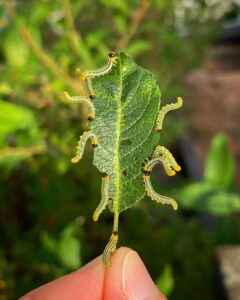
Petunias
- Description: Petunias are colorful flowering plants available in a wide range of hues, including pink, purple, red, and white. They have trumpet-shaped blooms.
- Characteristics: Petunias prefer well-draining soil and full sun. They are versatile and can be grown in beds, containers, or hanging baskets.
- Repelling Action: Petunias produce a chemical compound called scopoletin, which acts as a natural repellent against caterpillars, including tobacco budworms and hornworms.
- Growing Tips: Plant petunias in a sunny location with good airflow. Deadhead spent blooms to encourage continuous flowering.
Rue (Ruta graveolens)
- Description: Rue is a perennial herb with blue-green foliage and small, yellow flowers. It has a strong, pungent scent.
- Characteristics: Rue prefers well-draining soil and full sun. It is drought-tolerant and can be grown in containers or as a border plant.
- Repelling Action: The bitter aroma of rue repels caterpillars, including those of cabbage butterflies and swallowtail butterflies.
- Growing Tips: Plant rue in a location with good air circulation. Take caution as the plant may cause skin irritation in some individuals.
Alliums
- Description: Alliums are a diverse group of plants that include onions, garlic, chives, and ornamental varieties. They have distinctive globe-shaped flower clusters.
- Characteristics: Alliums prefer well-draining soil and full sun. They are versatile and can be grown in vegetable gardens, flower beds, or containers.
- Repelling Action: The pungent odor of alliums repels caterpillars, particularly those of aphids, cabbage worms, and onion maggots.
- Growing Tips: Plant alliums in a location with good sunlight. Space bulbs or plants adequately to allow proper growth and airflow.
Chrysanthemums
- Description: Chrysanthemums, or mums, are colorful flowering plants with a variety of bloom shapes and colors. They are often used as fall decorations.
- Characteristics: Chrysanthemums thrive in well-draining soil and full sun. They are perennial plants that add vibrancy to gardens.
- Repelling Action: Chrysanthemums contain pyrethrum, a natural insecticide that repels and kills caterpillars, as well as other garden pests.
- Growing Tips: Plant chrysanthemums in a sunny location and pinch back growth early in the season to promote bushiness and more blooms.
Tansy (Tanacetum vulgare)
- Description: Tansy is a perennial herb with fern-like leaves and clusters of yellow button-like flowers. It has a strong, distinctive scent.
- Characteristics: Tansy thrives in well-draining soil and full sun. It is a hardy plant that can become invasive, so consider planting it in containers.
- Repelling Action: Tansy contains compounds, including thujone and camphor, that repel caterpillars and other garden pests.
- Growing Tips: Plant tansy in a contained area or large pots to prevent it from spreading. Prune regularly to maintain its shape and prevent self-seeding.
Borage (Borago officinalis)
- Description: Borage is an annual herb with hairy leaves and star-shaped blue flowers. It has a refreshing cucumber-like flavor.
- Characteristics: Borage prefers well-draining soil and full sun. It self-seeds readily and attracts pollinators.
- Repelling Action: Borage attracts beneficial insects like predatory wasps and lacewings, which help control caterpillar populations.
- Growing Tips: Plant borage in a sunny spot and provide support for its tall stems. It can be used as an edible herb or ornamental plant.
Wormwood (Artemisia.)
- Description: Wormwood is a perennial herb with silvery-gray foliage and a strong, bitter scent.
- Characteristics: Wormwood prefers well-draining soil and full sun. It is a hardy plant that can tolerate dry conditions.
- Repelling Action: The strong aroma of wormwood acts as a natural deterrent against caterpillars, including cabbage loopers and armyworms.
- Growing Tips: Plant wormwood in a location with good airflow. Regular pruning will help maintain its shape and control growth.
Pennyroyal (Mentha pulegium)
- Description: Pennyroyal is a low-growing perennial herb with small, round leaves and purple flowers.
- Characteristics: Pennyroyal prefers moist soil and partial shade. It is often used as a ground cover or in hanging baskets.
- Repelling Action: Pennyroyal has a strong minty fragrance that repels caterpillars, including cabbage loopers and cutworms.
- Growing Tips: Plant pennyroyal in a partially shaded area with moist soil. Regular trimming will help prevent legginess.
Catnip (Nepeta cataria)
- Description: Catnip is a perennial herb with aromatic gray-green leaves and clusters of white or purple flowers.
- Characteristics: Catnip prefers well-draining soil and full sun. It is known for its attractive effect on cats.
- Repelling Action: Catnip contains a compound called nepetalactone, which repels caterpillars, including cabbage loopers and cutworms.
- Growing Tips: Plant catnip in a sunny location with good airflow. Consider its spread and growth habit, as it can become invasive.
Pyrethrum (Chrysanthemum coccineum)
- Description: Pyrethrum, also known as painted daisy, is a perennial flower with daisy-like blooms in various colors.
- Characteristics: Pyrethrum thrives in well-draining soil and full sun. It is valued for its insecticidal properties.
- Repelling Action: Pyrethrum produces natural insecticidal compounds that repel and kill caterpillars, aphids, and other garden pests.
- Growing Tips: Plant pyrethrum in a sunny spot and deadhead spent blooms to promote continuous flowering and pest control.
Spearmint (Mentha spicata)
- Description: Spearmint is a perennial herb with aromatic, toothed leaves and tall spikes of pale purple flowers.
- Characteristics: Spearmint prefers moist soil and partial shade. It is commonly used in culinary and medicinal applications.
- Repelling Action: The strong scent of spearmint acts as a natural repellent against caterpillars, including cabbage loopers and cutworms.
- Growing Tips: Plant spearmint in a container or a contained area of the garden, as it can spread aggressively. Regular pruning will help control its growth.
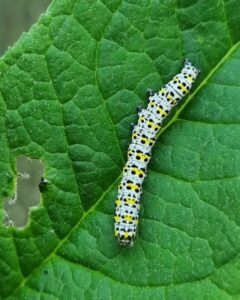
Tarragon (Artemisia dracunculus)
- Description: Tarragon is a perennial herb with narrow, aromatic leaves and small greenish-white flowers.
- Characteristics: Tarragon prefers well-draining soil and full sun. It is commonly used in culinary preparations.
- Repelling Action: Tarragon repels caterpillars, including those of cabbage moths and tomato hornworms, with its strong fragrance.
- Growing Tips: Plant tarragon in a sunny location with well-draining soil. Regular pruning will help maintain its shape and encourage bushiness.
Sage (Salvia officinalis)
- Description: Sage is a perennial herb with woody stems, gray-green leaves, and tubular flowers in shades of purple, blue, or white.
- Characteristics: Sage prefers well-draining soil and full sun. It is a drought-tolerant plant with aromatic foliage.
- Repelling Action: The strong scent of sage deters caterpillars, including cabbage loopers and cutworms.
- Growing Tips: Plant sage in a sunny spot with good air circulation. Prune regularly to prevent legginess and stimulate new growth.
Lemon Balm (Melissa officinalis)
- Description: Lemon balm is a perennial herb with heart-shaped leaves and small white flowers. It has a lemony fragrance.
- Characteristics: Lemon balm prefers well-draining soil and partial shade. It is often used in herbal teas and culinary recipes.
- Repelling Action: The citrusy aroma of lemon balm repels caterpillars, including cabbage loopers and cutworms.
- Growing Tips: Plant lemon balm in a partially shaded location with moist soil. Regular pruning will help maintain its shape and prevent overcrowding.
Fennel (Foeniculum vulgare)
- Description: Fennel is a tall perennial herb with feathery leaves and clusters of yellow flowers.
- Characteristics: Fennel prefers well-draining soil and full sun. It is valued for its culinary and medicinal uses.
- Repelling Action: Fennel repels caterpillars, including those of cabbage butterflies and swallowtail butterflies, with its strong scent.
- Growing Tips: Plant fennel in a sunny location with plenty of space for its height. Be mindful of its tendency to self-seed and consider containing it in a designated area.
By incorporating these caterpillar-repellent plants into your garden, you can create a natural defense system that deters these leaf-devouring pests while adding beauty, fragrance, and a touch of biodiversity to your outdoor space.
Remember to provide the appropriate growing conditions and maintenance care to ensure the optimal growth and effectiveness of these plants in protecting your garden.

How do I incorporate caterpillar-repellent plants in my garden?
Incorporating caterpillar-repellent plants into your garden is a simple and effective way to naturally control caterpillar populations. Here are some steps to help you incorporate these plants:
- Identify susceptible areas: Take a close look at your garden and identify areas where caterpillars are causing damage or where vulnerable plants are located.
- Select appropriate plants: Choose caterpillar-repellent plants from the list provided earlier based on their suitability for your garden’s growing conditions, such as sunlight requirements, soil type, and available space.
- Plan plant placement: Consider the layout of your garden and plan where to incorporate these plants strategically. Plant them near susceptible plants or in areas where caterpillars are commonly found.
- Create a diverse mix: Incorporate a variety of caterpillar-repellent plants to maximize their effectiveness. A diverse mix of plants can attract beneficial insects, provide different scents and visual cues, and create a more resilient garden ecosystem.
- Companion planting: Combine caterpillar-repellent plants with other companion plants that offer additional benefits. For example, interplant marigolds with tomatoes to deter caterpillars while also improving tomato growth.
- Provide proper care: Ensure that the caterpillar-repellent plants receive adequate care, including regular watering, proper fertilization, and timely pruning. Healthy and well-maintained plants are more likely to repel caterpillars effectively.
- Monitor and remove pests: Keep a close eye on your garden for any signs of caterpillar infestation. Inspect the plants regularly, and manually remove any caterpillars, eggs, or larvae you come across. This will prevent them from causing extensive damage.
- Rotate plantings: Consider rotating your plantings each season to disrupt the life cycle of caterpillars and prevent the buildup of pests in specific areas of your garden.
- Attract beneficial insects: Many caterpillar-repellent plants also attract beneficial insects like ladybugs, lacewings, and parasitic wasps, which feed on caterpillars. Encourage these helpful insects to visit your garden by providing a water source and planting nectar-rich flowers nearby.
- Practice good garden hygiene: Keep your garden clean by removing debris, fallen leaves, and decaying plant matter. These can provide hiding places and breeding grounds for caterpillars and other pests.
By following these steps, you can successfully incorporate caterpillar-repellent plants into your garden and create a more balanced and pest-resistant environment. Remember to adapt these practices to your specific garden conditions and tailor them to suit the needs of individual plant species.
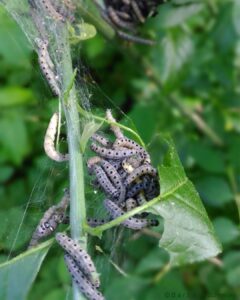
Plants That Repel Caterpillars FAQ
Can these plants eliminate caterpillars?
While caterpillar-repellent plants can help deter caterpillars and reduce their populations, it is unlikely that they will eliminate caterpillars from your garden.
These plants act as natural deterrents, making the environment less favorable for caterpillars to feed and reproduce. However, some caterpillars may still be present, especially if they are not solely dependent on the plants you have chosen.
It’s important to combine the use of caterpillar-repellent plants with other integrated pest management techniques for effective caterpillar control.
Are these plants safe for the environment?
Yes, caterpillar-repellent plants are generally safe for the environment. They offer a natural and eco-friendly approach to pest control. Unlike chemical pesticides, which can have harmful effects on beneficial insects, birds, and other wildlife, these plants work in harmony with nature.
They do not leave harmful residues and do not contribute to environmental pollution. However, it’s important to use these plants responsibly and avoid overuse or misuse of any pesticides or repellents.
Do these plants repel all types of caterpillars?
Caterpillar-repellent plants have varying degrees of effectiveness against different types of caterpillars. While they are known to repel many common garden caterpillars, it’s important to note that not all caterpillar species will be affected in the same way.
Some plants may have a stronger repellent effect on specific caterpillar species, while others may have a broader range of effectiveness. Additionally, some caterpillars have developed resistance to certain repellent plants.
It’s recommended to use a combination of different repellent plants and integrated pest management strategies to target a wider range of caterpillar species and achieve better results.
Are these plants harmful to other beneficial insects?
Caterpillar-repellent plants are generally safe for beneficial insects when used responsibly. While they repel caterpillars, they typically do not have adverse effects on other beneficial insects such as bees, butterflies, ladybugs, or predatory insects that help maintain a healthy garden ecosystem.
Many of these plants attract beneficial insects that prey on caterpillars, providing an additional layer of natural pest control. However, it’s important to avoid excessive use of chemical pesticides or other harmful substances that could harm beneficial insects along with the caterpillars.
Can I use caterpillar-repellent plants indoors?
While caterpillar-repellent plants are primarily used in outdoor gardens, some plants can also be grown indoors with proper care.
However, it’s important to consider the specific requirements of each plant and whether it is suitable for indoor cultivation.
Some plants may require more space, sunlight, or specific growing conditions that may be challenging to replicate indoors.
Additionally, indoor environments may have limited natural predators for caterpillars, so it’s important to monitor and control caterpillar populations carefully if they become problematic.
How long does it take for these plants to repel caterpillars?
The time it takes for caterpillar-repellent plants to effectively repel caterpillars can vary. In some cases, the repellent effect may be immediate, while in others, it may take some time for the plants to release their natural compounds or develop a strong scent that repels caterpillars.
It’s important to note that the effectiveness of these plants also depends on factors such as the specific plant species, the presence of other attractants or food sources, and the overall caterpillar population in the area.
Consistent planting, regular maintenance, and patience are key to allowing the plants to establish their repellent properties and effectively deter caterpillars over time.
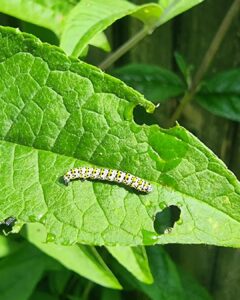
Other natural methods to control caterpillars
In addition to using caterpillar-repellent plants, there are several other natural methods you can incorporate to control caterpillars in your garden.
These methods focus on creating an unfavorable environment for caterpillars or introducing natural predators that help keep their populations in check. Here are some effective natural methods:
- Handpicking: Regularly inspect your plants for caterpillars and manually remove them by hand. Look for clusters of eggs or visible caterpillars and carefully pick them off the leaves. Drop them into a bucket of soapy water to ensure they don’t return to your plants.
- Beneficial Insects: Encourage beneficial insects that prey on caterpillars, such as ladybugs, lacewings, and parasitic wasps, to populate your garden. Plant flowers that attract these beneficial insects or consider releasing them in your garden as biological control agents.
- Birdhouses and Feeders: Install birdhouses and bird feeders in your garden to attract birds that feed on caterpillars. Birds like chickadees, wrens, and titmice are known to be voracious caterpillar hunters and can significantly reduce their populations.
- Natural Predators: Create a garden environment that attracts natural predators of caterpillars, such as frogs, toads, lizards, and snakes. Provide suitable habitats like rocks, logs, or water sources that encourage these beneficial creatures to take up residence in your garden.
- Bacillus thuringiensis (Bt): Bt is a natural microbial insecticide that specifically targets caterpillars. It contains bacteria that produce toxins harmful to caterpillars but safe for humans, pets, and beneficial insects. Apply Bt according to the instructions on the product label to control caterpillar infestations.
- Neem Oil: Neem oil is a botanical insecticide derived from the neem tree. It disrupts the feeding and growth of caterpillars, effectively controlling their populations. Dilute neem oil according to the instructions and spray it on affected plants.
- Row Covers: Use lightweight row covers or netting to physically block caterpillars from accessing your plants. This barrier prevents them from laying eggs or feeding on the leaves.
- Crop Rotation: Rotate your crops each season to disrupt the life cycle of caterpillars and reduce the risk of recurring infestations. Moving susceptible plants to different locations can help break the cycle and limit the buildup of caterpillar populations.
By combining these natural methods with caterpillar-repellent plants, you can create a comprehensive and eco-friendly approach to caterpillar control in your garden. Remember to monitor your plants regularly and take prompt action if caterpillar infestations occur to prevent significant damage to your garden.
Conclusion
Controlling caterpillars in your garden is essential for maintaining the health and vitality of your plants. By incorporating caterpillar-repellent plants and utilizing other natural methods, you can effectively manage caterpillar populations while promoting a balanced and eco-friendly garden environment.
Caterpillar-repellent plants offer a natural and sustainable solution for deterring caterpillars. Their strong scents, tastes, or chemical compounds act as natural repellents, making the environment less favorable for caterpillars to feed and reproduce.
By including a variety of these plants in your garden, you create a diverse and dynamic ecosystem that helps control caterpillar populations. Furthermore, caterpillar-repellent plants offer several advantages over chemical pesticides.
They are safe for the environment, beneficial insects, and other wildlife. Unlike chemical pesticides, which can leave harmful residues and contribute to environmental pollution, these plants work in harmony with nature, preserving the delicate balance of your garden ecosystem.
Remember, successful caterpillar control requires a proactive approach and regular monitoring of your garden. Inspect your plants frequently for signs of caterpillar infestations, such as chewed leaves, clusters of eggs, or visible caterpillars. Take immediate action by manually removing caterpillars or applying natural control methods when necessary.
